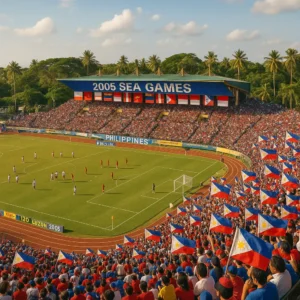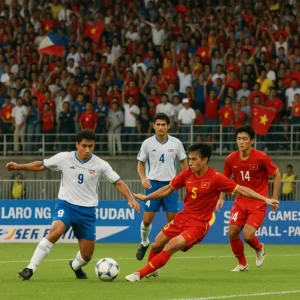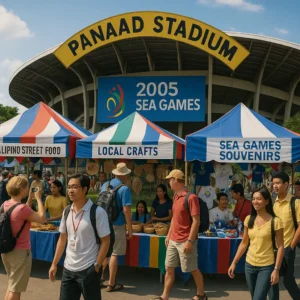In 2005, Panaad Stadium in Bacolod City, Negros Occidental, became more than a local venue — it became a part of Philippine sports history. As one of the official host stadiums for the 2005 Southeast Asian Games, Panaad played a critical role in putting Visayas on the regional sports map.
This article breaks down how Panaad Stadium not only hosted events — it elevated the spirit, pride, and performance of Filipino athletes.

Hosting International Football in the Visayas
Panaad was selected to host the men’s and women’s football tournaments of the SEA Games — a milestone moment for regional sports.
Key contributions from the football matches:
-
Drew international teams such as Thailand, Vietnam, and Malaysia to Bacolod
-
Gave Filipino footballers a true home crowd advantage
-
Provided high-quality turf and secure facilities that met ASEAN standards
-
Broadcasted matches nationwide, highlighting Bacolod City in prime-time sports media
This event turned the city into a temporary football capital of the Philippines.

Timeline from start to SEA Games
Bringing National Spotlight to Bacolod
Before 2005, many major sporting events in the Philippines were held in Metro Manila. The SEA Games brought much-needed decentralization.
What this meant for Bacolod and Negros Occidental:
-
Thousands of visiting athletes and spectators arrived, boosting local tourism
-
Hotels, restaurants, and transport operators saw record sales
-
Media coverage featured local landmarks and culture, from the MassKara Festival to Negros cuisine
-
Created a legacy of trust in Bacolod as a world-class host city
This was a rare opportunity to showcase Western Visayas on a continental level.

Upgrading Panaad for International Standards
To prepare for the SEA Games, Panaad underwent significant upgrades that would later benefit generations of local athletes.
Renovations and improvements included:
-
Upgraded playing field to match FIFA guidelines
-
Expansion of seating capacity for fans and media
-
Installation of lighting systems suitable for televised matches
-
Enhanced security and crowd control infrastructure
These improvements allowed the stadium to host future events like the AFC Cup and the Philippine Football League.
Inspiring the Next Generation of Athletes
One of the most lasting effects of the 2005 SEA Games in Panaad is the inspiration it provided to young Filipino athletes.
Local sports programs that grew after the Games:
-
Enhanced funding for the Negros Occidental Football Association (NOFA)
-
Youth football academies established in Bacolod and nearby cities
-
Regular hosting of school-level and club tournaments at Panaad
-
A visible pathway created from local talent to national teams
The event showed that international-level competition was possible outside Metro Manila.
Strengthening Regional Identity Through Sports
More than a sports venue, Panaad became a symbol of regional unity and pride.
Cultural impacts observed:
-
Unified diverse communities through support for Team Philippines
-
Showcased Negros’ hospitality and sportsmanship
-
Promoted the idea of equal opportunities for provinces in hosting major events
-
Inspired local governments to invest more in sports infrastructure
Panaad proved that a provincial stadium could deliver world-class results.

Frequently Asked Questions (FAQs)
What events did Panaad host during the 2005 SEA Games?
Panaad Stadium hosted men’s and women’s football tournaments, drawing both regional and international attention.
How did the SEA Games benefit Bacolod?
The event boosted tourism, improved sports infrastructure, and elevated Bacolod’s reputation as a viable host city for future international events.
Is Panaad Stadium still in use today?
Yes. It continues to host football matches, festivals, and community events in Negros Occidental.
Why was Panaad Stadium important to Philippine sports?
It marked the first time a Visayas-based venue hosted a major SEA Games event, proving that regional stadiums can meet international standards.
Where is Panaad Stadium located?
Panaad Stadium is in Barangay Mansilingan, Bacolod City, part of the Panaad Park and Sports Complex.
A Lasting Legacy in Philippine Sports
The 2005 SEA Games at Panaad wasn’t just a moment — it was a movement.
It changed perceptions, inspired communities, and proved that Philippine provinces could stand proudly on the Southeast Asian stage.
Panaad Stadium’s legacy lives on, not just in its walls, but in the passion of every athlete and fan who walked through its gates.
